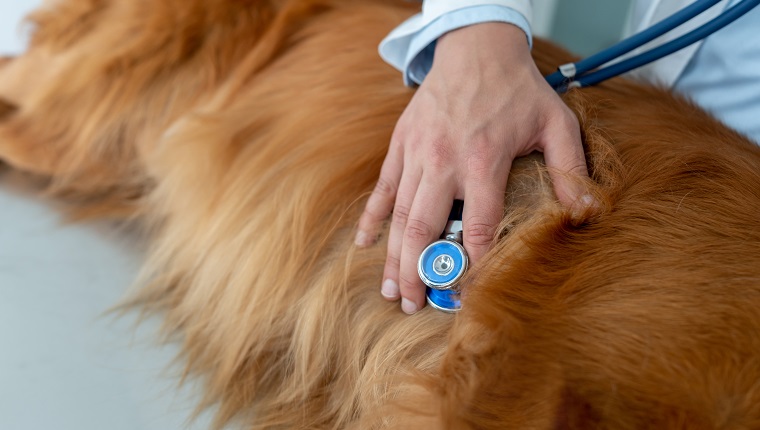Pulmonary thromboembolism in dogs, also known by the term PTE, is a medical condition that involves the presence of a blood clot in one of the dog’s arteries. It results in blood not flowing properly into the lung from the artery.
The condition often affects dogs who are medium or large in size, along with older canines.
If you see signs that your dog might be suffering from a blood clot in the lungs, then you must consult your veterinarian for a proper diagnosis and course of treatment. Here’s what you should know about the symptoms, causes, and treatments of pulmonary thromboembolism in dogs.
Symptoms Of Pulmonary Thromboembolism In Dogs
Pulmonary thromboembolism in dogs brings on a range of symptoms. Some of the most common symptoms include:
- Breathing difficulties
- Coughing
- Breathing very quickly
- Spitting blood
- Not being able to get comfortable
- Acting lethargic
Causes Of Pulmonary Thromboembolism In Dogs

There are a number of potential causes of PTE in dogs. Some of the most common causes include:
- Heartworm
- Kidney disease
- Cancer
- Cushing’s disease
- Inflamed pancreas
- Blood clotting within blood vessels (known as disseminated intravascular coagulopathy or DIC)
- Heart disease
Veterinary Treatments
If you start to suspect that your dog has developed pulmonary thromboembolism, then your veterinarian will want to carry out a full physical examination. This will include blood, electrolyte and urine tests.
Your vet will ask detailed questions about your dog’s medical history, as well as any recent symptoms. They’ll also check the levels of oxygen in the blood and may also suggest X-rays or an electrocardiogram (ECG).
When it comes to treatment, the first step is often to use oxygen therapy while the dog is hospitalized. After this, the vet will target the underlying cause of the condition.
While your dog recovers at home, your vet might recommend that you limit your dog’s exercise activities. It is also vital to keep up regular vet visits to monitor the state of the condition.
Has your dog ever developed pulmonary thromboembolism? How did your vet help your dog recover? Tell us all about it in the comments below.









